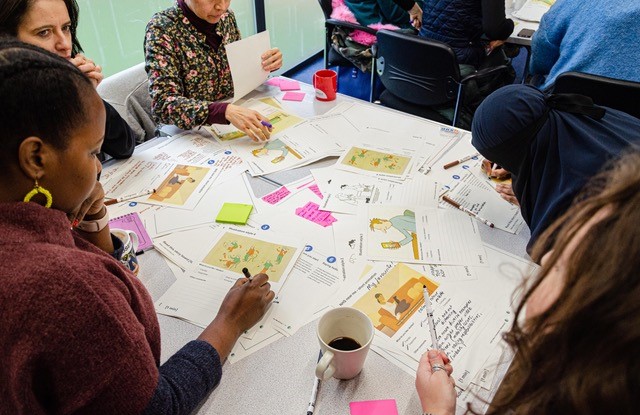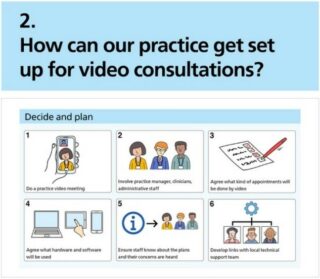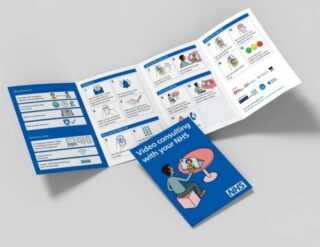The world needs video consultations. Now.
In the past 10 years there has been a slow but steady growth in the use of video technology, like Skype or FaceTime, in health care. Now the spectre of COVID-19 means an unprecedented impetus to adopt this relatively new service model on a global scale. Social distancing and widespread quarantine or isolation not only indicates, but necessitates, ‘healthcare-at-a-distance’. Patients and professionals are working in real-time to understand and accommodate the realities of what this means. Following several years of research, we have developed evidence-based guidance that, we hope, can help.
Video technology is not new. Millennials typically use the technology on a weekly, if not daily, basis. And many health professionals and patients of all ages and from all walks of life have some experience of using it. Typically these experiences have involved talking with friends and family, e.g. via Skype or WhatsApp. Some have experience of video calling with private healthcare providers. Until now video consultation services in the NHS have been ad hoc and slow to take off. The vision (set out in the Government’s NHS Long Term Plan) has been one in which a third of NHS hospital outpatient consultations are undertaken by video link, with GPs and practice staff increasingly connecting with patients remotely. Until now, and despite well-documented advantages to patients, there has been a reluctance on the ground to make this happen.
The vision has been one in which a third of NHS hospital outpatient consultations are undertaken by video link, with GPs and practice staff increasingly connecting with patients remotely.
Now is the time for change. Many NHS clinicians need to isolate but still need to continue to practice. Many people, aged 70 or over, with a long term condition, pregnant or with a weakened immune system, are self-isolating for extended periods. The rest of us are staying at home, practising social distancing and are extremely aware of the need to stay well back from friends, family, colleagues and strangers alike. At the same time, many of us still need to access health services, either due to symptoms of coronavirus or for support with conditions like diabetes or asthma. To get to grips with this, the way in which health services are delivered is radically changing, with an emphasis on home care, where appropriate, and the use of alternatives to face-to-face consultation. Video consultations have a significant role to play.
We have been working with Barts Health NHS Trust to study and support the development of video consultation services. Starting in the young adult diabetes service in 2010, the video consultation model then spread locally to include a further 10 outpatient clinics and now, like NHS services across the UK, needs to rapidly expand. Barts initially used Skype for video consultations, explored using Microsoft Teams, and has recently switched to Attend Anywhere (a dedicated web-based platform, widely used in the UK that helps health providers offer video consultation services). All are available to NHS providers, but vary in terms of accessibility and cost.
Before Covid-19 hit the UK, we were already developing guidance for clinicians and patients about ‘how to do a video consultation’ using any of these platforms. We did this recognising that, although some platforms have guidance and resources available to support use in healthcare, many don’t have any guidance, or do, but focus mostly on technical set up.

We received funding from the National Institute for Health Research and the Health Foundation to examine how people use video technology, conducted detailed analysis of the way people interact in video consultations, and studied implementation in community and hospital-based clinics to enable the spread of video consultation more widely in the NHS. We combined our findings with wider published evidence and then worked with patients and providers to co-design guidance. We worked closely with Design Science, an applied design company, that has helped us to bring the evidence on doing video consultations to life and ensure high quality, accessible information.
The result is a suite of resources including a video, illustrated online guidelines and downloadable leaflets and posters about how to set up and run a video consultation, with consistent messaging for both patients and professionals.


Our aim is to support those who are not familiar with video technology, to ensure that generic resources are relevant to any technology or clinical setting, and to make these freely available to anyone who needs them. It is serendipity that we have developed guidance at a time when it is needed more than ever. We hope that it can support providers, patients and professionals as they develop video consultations rapidly and at scale.
Full list of resources
- Video consultation information for GPs
- Video consulting with your NHS – printable leaflet for patients
- Video consulting with your NHS – quick guide for patients
- Video consulting with your NHS – video for patients
- Video consultations FAQs for patients
- Video consultation FAQs for GPs
If you’re interested in finding out more about this work or would like copies of these and other resources for use in your own setting please email Sara.
Comments
Ruth Kay 22 May 2020
Having introduced video consultation we are looking at how to support staff through difficult consultations with distressed service users. Does anyone have any suggestions to support the patients during and following consultations, but also the staff coping with feelings of inadequacy to provide the type of support they are used to offering please.